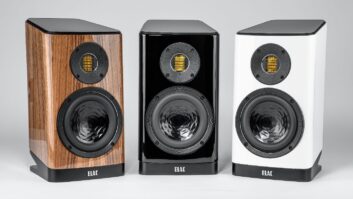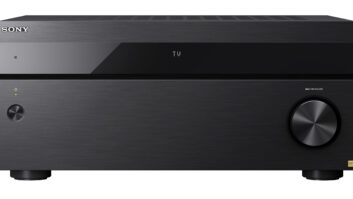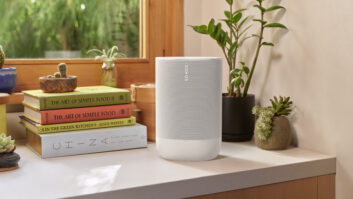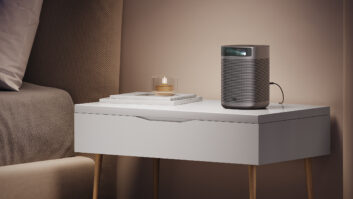Time really does fly when youre having fun. It seems like only a couple of days ago that I was excitedly discussing the initial release of HD DVD. In reality its been five months, and during that time Blu-ray Disc (BD) has hit the shelves. With such jaw-dropping high definition so readily available, its hard for a guy to tear himself away from his screen. However, I promised in the column on HD DVD that I would take another look at the new high-definition formats once BD got its feet on the ground. That time has finally arrived.
The First Five Months of HD DVD. Which video output resolution480i/p, 720p, or 1080ito use for HD DVD players has become the question of the summer. Truthfully, the answer to this question depends on which video device in a particular system does the best job de-interlacing and scaling the picture. You cant figure that out by looking at specifications; you have to actually test the video processing capabilities of each device. Throw some test discs with motion patterns into the player and try different combinations of input/output resolutions for the various video devices, including the player. Eventually, youll find a combination that produces the sharpest picture with the smoothest motion and fewest artifacts.
Theres a catch. DVDs and HD DVDs may look better with different devices doing the video processing, meaning the player may need to output different resolutions depending on the type of disc its playing. This is especially true with the Toshiba HD DVD players. They are good at upscaling DVDs to 720p, but dont downscale HD DVDs to 720p well at all. To find the right output resolution for each disc type, use both SD and HD motion patterns. The former are everywhere (Digital Video Essentials, Avia Pro, and HQV Benchmark to name a few) but the latter are still rather scarce. They can be foundmainly on the webbut be sure you trust the source.
What happens if the player has to output different resolutions? You dont want your clients making the switch manually, so program one button of the control system for DVD and another one for HD DVD and let the control system automatically change the output resolution of the player. All your clients need to know is whether they are watching a DVD or an HD DVD.
You may discover that the current HD DVD players will not output 480i through HDMI. If you want 480i for an external de-interlacer or something of that nature, youll have to move to the component output. Unfortunately, its not safe to rely strictly on component for all resolutions because the players will only output DVDs upscaled to 720p or 1080i through HDMI. The same will be true for 720p and 1080i from HD DVDs once movie studios begin using the Image Constraint Token. The component output will be restricted to 960 x 540.
One particularly bright spot for HD DVD thus far is firmware updates. Toshiba has been cranking them out at the rate of about one per month since their players were released. The players support ethernet connectivity, so all you have to do is hook them up to a router and periodically check for updates using a wizard in the setup menu. The updates have improved disc compatibility, HDMI handshake, color space for HDMI-to-DVI connections, and even added blacker-than-black for HDMI.
Finally, the confusion over audio output continues. First, if you elect to have the players output HD DVD soundtracks as PCM through HDMI, they will sample rate convert everything to 24 bit, 96 kHz resolution. It takes a very good conversion algorithm to do this without side effects. You be the judgeuse your ears to verify the results. Second, some people are experiencing an HDMI glitch where audio CDs produce a very loud tone from the speakers. Currently, the solution is to use S/PDIF (common optical or coaxial digital connections) for CDs.
A New Blu-ray. Blu-ray Disc has been slow out of the starting gate. A combination of early software and hardware issues has translated into a growing unrest among BD supporters. However, nothing that has happened so far is the fault of the support format itself, so the best advice I can give people is not to write it off so soon. Initial BD releases all used the older MPEG-2 video codec on 25 GB discs, whereas HD DVDs used one of the latest codecs, VC-1, on 30 GB discs. So far, the BD camp has been unable to prove that their implementation of MPEG-2 can match the performance of VC-1 on HD DVD. However, BD players are required to support VC-1 and MPEG-4 (the other new codec), so BD can also make use of their more efficient compression. Future BD releases using the newer codecs could easily look as good as HD DVD. Be patient.
Should you decide to install first-generation BD players, there are some things to keep in mind. First, you have to deal with video output resolution again. Go through the same exercise you did for HD DVD players, just add 1080p to the mix. Few displays will accept 1080p right now, so you may not have to try it at all.
The next thing is ethernet connectivity. The Samsung BD player doesnt have ethernet, which means you cant access interactive Internet features or directly download firmware updates. The latter has become very important in light of recent news that Samsung is working to revise the default settings of the noise reduction circuit on the Genesis scaler chip in their BD player to sharpen the picture. The new settings will be available in a firmware update, but it must be loaded from disc. If you prefer the ethernet route, keep your eyes peeled for players such as the Pioneer Elite that have a network port.
You should also know that BD players are only required to support core Dolby Digital and DTS, as well as multi-channel PCM. S/PDIF is not compatible with multi-channel PCM, so you must use HDMI or multi-channel analog outputs to hear the uncompressed soundtracks. With some first-generation players, you have to enter the setup menu and manually switch the HDMI output to Bitstream for Dolby Digital and DTS, or PCM for multi-channel PCM. Thats inconvenient even with a control system, so you may want to wait for some of the new players that are right around the corner.
Will There Be a Part 3? Yes. Ive tried to cover issues that are most likely to have a direct, noticeable impact on what your clients see and hear, but new challenges are bound to arise as additional hardware and software come to market. Youre in business to please clients with gorgeous high-definition pictures and, in turn, make money. My job is to tell you how to correctly install and configure both HD DVD and BD players so that they actually produce those gorgeous pictures. Believe me, its not always easy.






